Dr. Robert F. Schleif9780801846731, 9780801846748, 0801846730, 0801846749
Genetics and Molecular Biology is copiously illustrated with two-color line art. Each chapter includes an extensive list of important references to the primary literature, as well as many innovative and thought-provoking problems on material covered in the text or on related topics. These help focus the student’s attention of a variety of critical issues. Solutions are provided for half of the problems.
Praise for the first edition:
“Schleif’s Genetics and Molecular Biology… is a remarkable achievement. It is an advanced text, derived from material taught largely to postgraduates, and will probably be thought best suited to budding professionals in molecular genetics. In some ways this would be a pity, because there is also gold here for the rest of us… The lessons here in dealing with the information explosion in biology are that an ounce of rationale is worth a pound of facts and that, for educational value, there is nothing to beat an author writing about stuff he knows from the inside.”–Nature.
“Schleif presents a quantitative, chemically rigorous approach to analyzing problems in molecular biology. The text is unique and clearly superior to any currently available.”–R.L. Bernstein, San Francisco State University.
“The greatest strength is the author’s ability to challenge the student to become involved and get below the surface.”–Clifford Brunk, UCLA
Table of contents :
Preface……Page 5
Contents……Page 7
1. CellStructure and Function……Page 17
Rudiments of Prokaryotic Cell Structure……Page 18
Rudiments of Eukaryotic Cell Structure……Page 22
Packing DNA into Cells……Page 23
Moving Molecules into or out of Cells……Page 24
Diffusion within the Small Volume of a Cell……Page 29
Exponentially Growing Populations……Page 30
Composition Change in Growing Cells……Page 31
Problems……Page 32
References……Page 34
2. Nucleic Acid and Chromosome Structure……Page 37
The Regular Backbone Of DNA……Page 38
Grooves in DNA and Helical Forms of DNA……Page 39
Dissociation and Reassociation of Base-paired Strands……Page 42
Reading Sequence Without Dissociating Strands……Page 43
Electrophoretic Fragment Separation……Page 44
Bent DNA Sequences……Page 45
Measurement of Helical Pitch……Page 47
Topological Considerations in DNA Structure……Page 48
Generating DNA with Superhelical Turns……Page 49
Measuring Superhelical Turns……Page 50
Determining Lk, Tw, and Wr in Hypothetical Structures……Page 52
Altering Linking Number……Page 53
Biological Significance of Superhelical Turns……Page 55
The Linking Number Paradox of Nucleosomes……Page 56
Southern Transfers to Locate Nucleosomes on Genes……Page 57
ARS Elements, Centromeres, and Telomeres……Page 59
Problems……Page 60
References……Page 63
3. DNA Synthesis……Page 69
Proofreading, Okazaki Fragments, and DNA Ligase……Page 70
Detection and Basic Properties of DNA Polymerases……Page 73
In vitro DNA Replication……Page 76
Error and Damage Correction……Page 78
DNA Replication Areas In Chromosomes……Page 82
Bidirectional Replication from E. coli Origins……Page 83
The DNA Elongation Rate……Page 85
Constancy of the E. coli DNA Elongation Rate……Page 87
Regulating Initiations……Page 88
Gel Electrophoresis Assay of Eukaryotic Replication Origins……Page 90
How Fast Could DNA Be Replicated?……Page 92
Problems……Page 94
References……Page 95
4. RNA Polymerase, Initiation……Page 101
Measuring the Activity of RNA Polymerase……Page 102
Concentration of Free RNA Polymerase in Cells……Page 105
The RNA Polymerase in Escherichia coli……Page 106
Three RNA Polymerases in Eukaryotic Cells……Page 107
Multiple but Related Subunits in Polymerases……Page 108
Multiple Sigma Subunits……Page 111
The Structure of Promoters……Page 112
Enhancers……Page 115
Enhancer-Binding Proteins……Page 116
DNA Looping in Regulating Promoter Activities……Page 118
Steps of the Initiation Process……Page 120
Measurement of Binding and Initiation Rates……Page 121
Relating Abortive Initiations to Binding and Initiating……Page 123
Roles of Auxiliary Transcription Factors……Page 125
Melted DNA Under RNA Polymerase……Page 126
Problems……Page 127
References……Page 129
Polymerase Elongation Rate……Page 135
Transcription Termination at Specific Sites……Page 137
Termination……Page 138
Processing Prokaryotic RNAs After Synthesis……Page 141
S1 Mapping to Locate 5’ and 3’ Ends of Transcripts……Page 142
Caps, Splices, Edits, and Poly-A Tails on Eukaryotic RNAs……Page 143
The Discovery and Assay of RNA Splicing……Page 144
Involvement of the U1 snRNP Particle in Splicing……Page 147
Splicing Reactions and Complexes……Page 150
The Discovery of Self-Splicing RNAs……Page 151
A Common Mechanism for Splicing Reactions……Page 153
Other RNA Processing Reactions……Page 155
Problems……Page 156
References……Page 158
6. Protein Structure……Page 165
The Amino Acids……Page 166
The Peptide Bond……Page 169
Electrostatic Forces that Determine Protein Structure……Page 170
Hydrogen Bonds and the Chelate Effect……Page 174
Hydrophobic Forces……Page 175
Thermodynamic Considerations of Protein Structure……Page 177
Structures within Proteins……Page 178
The Alpha Helix, Beta Sheet, and Beta Turn……Page 180
Calculation of Protein Tertiary Structure……Page 182
Secondary Structure Predictions……Page 184
Structures of DNA-Binding Proteins……Page 186
Salt Effects on Protein-DNA Interactions……Page 189
Locating Specific Residue-Base Interactions……Page 190
Problems……Page 191
References……Page 193
7. Protein Synthesis……Page 199
Activation of Amino Acids During Protein Synthesis……Page 200
Fidelity of Aminoacylation……Page 201
How Synthetases Identify the Correct tRNA Molecule……Page 203
Decoding the Message……Page 204
Base Pairing between Ribosomal RNA and Messenger……Page 207
Experimental Support for the Shine-Dalgarno Hypothesis……Page 208
Eukaryotic Translation and the First AUG……Page 210
Tricking the Translation Machinery into Initiating……Page 211
Protein Elongation……Page 213
Translocation……Page 214
Termination, Nonsense, and Suppression……Page 215
Resolution of a Paradox……Page 218
Messenger Instability……Page 219
Protein Elongation Rates……Page 220
Directing Proteins to Specific Cellular Sites……Page 223
Verifying the Signal Peptide Model……Page 224
The Signal Recognition Particle and Translocation……Page 226
Expectations for Ribosome Regulation……Page 227
Proportionality of Ribosome Levels and Growth Rates……Page 228
Regulation of Ribosome Synthesis……Page 230
Balancing Synthesis of Ribosomal Components……Page 232
Problems……Page 234
References……Page 236
Mutations……Page 243
Point Mutations, Deletions, Insertions, and Damage……Page 244
Classical Genetics of Chromosomes……Page 247
Complementation, Cis, Trans, Dominant, and Recessive……Page 249
Mechanism of a trans Dominant Negative Mutation……Page 250
Genetic Recombination……Page 251
Mapping by Recombination Frequencies……Page 252
Heteroduplexes and Genetic Recombination……Page 255
Branch Migration and Isomerization……Page 257
Elements of Recombination in E. coli, RecA, RecBCD, and Chi……Page 259
Growing Cells for Genetics Experiments……Page 261
Testing Purified Cultures, Scoring……Page 262
Isolating Auxotrophs, Use of Mutagens and Replica Plating……Page 263
Genetic Selections……Page 264
Mapping with Generalized Transducing Phage……Page 266
Principles of Bacterial Sex……Page 267
Elements of Yeast Genetics……Page 269
Elements of Drosophila Genetics……Page 270
Isolating Mutations in Muscle or Nerve in Drosophila……Page 271
Fate Mapping and Study of Tissue-Specific Gene Expression……Page 272
Problems……Page 273
References……Page 277
9. Genetic Engineering……Page 281
The Isolation of DNA……Page 282
The Biology of Restriction Enzymes……Page 284
Cutting DNA with Restriction Enzymes……Page 287
Joining DNA Fragments……Page 288
Plasmid Vectors……Page 290
A Phage Vector for Bacteria……Page 294
Vectors for Higher Cells……Page 295
Putting DNA Back into Cells……Page 297
Cloning from RNA……Page 298
Plaque and Colony Hybridization for Clone Identification……Page 299
Walking Along a Chromosome to Clone a Gene……Page 300
Arrest of Translation to Assay for DNA of a Gene……Page 301
Chemical DNA Sequencing……Page 302
Enzymatic DNA Sequencing……Page 305
Problems……Page 307
References……Page 309
Finding Clones from a Known Amino Acid Sequence……Page 313
Finding Clones Using Antibodies Against a Protein……Page 314
Southern, Northern, and Western Transfers……Page 316
Polymerase Chain Reaction……Page 318
Isolation of Rare Sequences Utilizing PCR……Page 321
Physical and Genetic Maps of Chromosomes……Page 322
Chromosome Mapping……Page 323
DNA Fingerprinting—Forensics……Page 326
Megabase Sequencing……Page 327
Footprinting, Premodification and Missing Contact Probing……Page 329
Hypersynthesis of Proteins……Page 333
Altering Cloned DNA by in vitro Mutagenesis……Page 334
Mutagenesis with Chemically Synthesized DNA……Page 337
Problems……Page 339
References……Page 341
11. Lac Operon……Page 347
Background of the lac Operon……Page 348
The Role of Inducer Analogs in the Study of the lac Operon……Page 350
Proving lac Repressor is a Protein……Page 351
An Assay for lac Repressor……Page 352
The Difficulty of Detecting Wild-Type lac Repressor……Page 354
Detection and Purification of lac Repressor……Page 356
Repressor Binds to DNA: The Operator is DNA……Page 357
The Migration Retardation Assay and DNA Looping……Page 359
The Isolation and Structure of Operator……Page 360
The DNA-binding Domain of lac Repressor……Page 362
A Mechanism for Induction……Page 364
Problems……Page 365
References……Page 369
12. Ara Operon……Page 375
The Sugar Arabinose and Arabinose Metabolism……Page 376
Genetics of the Arabinose System……Page 378
Detection and Isolation of AraC Protein……Page 380
Repression by AraC……Page 382
Regulating AraC Synthesis……Page 384
Binding Sites of the ara Regulatory Proteins……Page 385
DNA Looping and Repression of araBAD……Page 387
In vivo Footprinting Demonstration of Looping……Page 389
How AraC Protein Loops and Unloops……Page 390
Why Positive Regulators are a Good Idea……Page 392
Problems……Page 393
References……Page 395
13. Trp Operon……Page 401
The Aromatic Amino Acid Synthetic Pathway and its Regulation……Page 402
Rapid Induction Capabilities of the trp Operon……Page 404
The Serendipitous Discovery of trp Enzyme Hypersynthesis……Page 406
Early Explorations of the Hypersynthesis……Page 408
trp Multiple Secondary Structures in trp Leader RNA……Page 412
Coupling Translation to Termination……Page 413
RNA Secondary Structure and the Attenuation Mechanism……Page 415
Other Attenuated Systems: Operons, Bacillus subtilis and HIV……Page 416
Problems……Page 418
References……Page 420
14. Lambda Phage……Page 425
The Physical Structure of Lambda……Page 426
The Genetic Structure of Lambda……Page 427
Lysogeny and Immunity……Page 429
Lambda’s Relatives and Lambda Hybrids……Page 430
Lambda Adsorption to Cells……Page 431
Early Transcription of Genes N and Cro……Page 432
N Protein and Antitermination of Early Gene Transcription……Page 433
Initiating DNA Synthesis with the O and P Proteins……Page 434
Proteins Kil, γ, β, and Exo……Page 435
Q Protein and Late Protein Synthesis……Page 436
Lysis……Page 437
Chronology of Becoming a Lysogen……Page 438
Site for Cro Repression and CI Activation……Page 439
Cooperativity in Repressor Binding and its Measurement……Page 442
The Need for and the Realization of Hair-Trigger Induction……Page 443
Induction from the Lysogenic State……Page 445
Entropy, a Basis for Lambda Repressor Inactivation……Page 447
Problems……Page 449
References……Page 451
Biology of 5S RNA Synthesis in Xenopus……Page 459
In vitro 5S RNA Synthesis……Page 462
TFIIIA Binding to the Middle of its Gene as Well as to RNA……Page 463
Switching from Oocyte to Somatic 5S Synthesis……Page 466
Structure and Function of TFIIIA……Page 468
Problems……Page 469
References……Page 470
16. MatingType in Yeast……Page 473
The Yeast Cell Cycle……Page 474
Mating Type Conversion in Saccharomyces cerevisiae……Page 475
Cloning the Mating Type Loci in Yeast……Page 476
Transfer of Mating Type Gene Copies to an Expression Site……Page 477
Structure of the Mating Type Loci……Page 478
The Expression and Recombination Paradoxes……Page 479
Silencing HML and HMR……Page 480
Isolation of α2 Protein……Page 482
α2 and MCM1……Page 484
Sterile Mutants, Membrane Receptors and G Factors……Page 485
DNA Cleavage at the MAT Locus……Page 487
DNA Strand Inheritance and Switching in Fission Yeast……Page 488
Problems……Page 490
References……Page 491
General Considerations on Signaling……Page 495
Outline of Early Drosophila Development……Page 498
Using Genetics to Begin Study of Developmental Systems……Page 500
Enhancer Traps for Detecting and Cloning Developmental Genes……Page 503
Expression Patterns of Developmental Genes……Page 504
Similarities Among Developmental Genes……Page 507
References……Page 508
18. Lambda Phage Integration……Page 513
Mapping Integrated Lambda……Page 514
Simultaneous Deletion of Chromosomal and Lambda DNA……Page 515
Gene Order Permutation and the Campbell Model……Page 517
Isolation of Integration-Defective Mutants……Page 519
Isolation of Excision-Deficient Mutants……Page 520
Incorrect Excision and gal and bio Transducing Phage……Page 522
Transducing Phage Carrying Genes Other than gal and bio……Page 524
Use of Transducing Phage to Study Integration and Excision……Page 525
The Double att Phage, att2……Page 526
Demonstrating Xis is Unstable……Page 528
Inhibition By a Downstream Element……Page 529
In vitro Assay of Integration and Excision……Page 531
Structure of the att Regions……Page 533
Structure of the Intasome……Page 535
Holliday Structures and Branch Migration in Integration……Page 537
Problems……Page 539
References……Page 541
19. Transposable GeneticElements……Page 547
IS Elements in Bacteria……Page 548
Structure and Properties of IS Elements……Page 550
Discovery of Tn Elements……Page 552
Structure and Properties of Tn Elements……Page 554
Inverting DNA Segments by Recombination, Flagellin Synthesis……Page 556
Mu Phage As a Giant Transposable Element……Page 558
An Invertible Segment of Mu Phage……Page 560
In vitro Transposition, Threading or Global Topology?……Page 561
Hopping by Tn10……Page 563
Retrotransposons in Higher Cells……Page 566
An RNA Transposition Intermediate……Page 568
P Elements and Transformation……Page 569
P Element Hopping by Chromosome Rescue……Page 571
Problems……Page 573
References……Page 574
The Basic Adaptive Immune Response……Page 579
Telling the Difference Between Foreign and Self……Page 581
The Number of Different Antibodies Produced……Page 582
Myelomas and Monoclonal Antibodies……Page 583
The Structure of Antibodies……Page 585
Many Copies of V Genes and Only a Few C Genes……Page 587
The J Regions……Page 589
The D Regions in H Chains……Page 591
Class Switching of Heavy Chains……Page 593
Enhancers and Expression of Immunoglobulin Genes……Page 594
The AIDS Virus……Page 595
Engineering Antibody Synthesis in Bacteria……Page 596
Assaying for Sequence Requirements of Gene Rearrangements……Page 598
Problems……Page 600
References……Page 602
21. Biological Assembly……Page 607
RNAse and Ribosomes……Page 608
The Global Structure of Ribosomes……Page 609
Assembly of Ribosomes……Page 611
Experiments with in vitro Ribosome Assembly……Page 613
Determining Details of Local Ribosomal Structure……Page 615
General Aspects……Page 617
The Geometry of Capsids……Page 618
The Structure of the Lambda Particle……Page 621
The Head Assembly Sequence and Host Proteins……Page 622
Packaging the DNA and Formation of the cos Ends……Page 623
Formation of the Tail……Page 625
Problems……Page 626
References……Page 629
22. Chemotaxis……Page 635
Assaying Chemotaxis……Page 636
Fundamental Properties of Chemotaxis……Page 638
Genetics of Motility and Chemotaxis……Page 640
How Cells Swim……Page 641
The Mechanism of Chemotaxis……Page 643
The Energy for Chemotaxis……Page 645
Adaptation……Page 646
Methylation and Adaptation……Page 648
Phosphorylation and the Rapid Response……Page 649
Problems……Page 651
References……Page 653
23. Oncogenesis……Page 659
Bacterially Induced Tumors in Plants……Page 660
Transformation and Oncogenesis by Damaging the Chromosome……Page 661
Identifying a Nucleotide Change Causing Cancer……Page 663
Retroviruses and Cancer……Page 666
Cellular Counterparts of Retroviral Oncogenes……Page 669
Identification of the src and sis Gene Products……Page 670
DNA Tumor Viruses……Page 672
Recessive Oncogenic Mutations, Tumor Suppressors……Page 674
The ras-fos-jun Pathway……Page 676
Problems……Page 677
References……Page 679
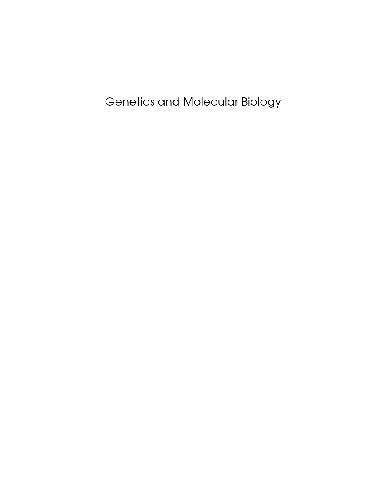
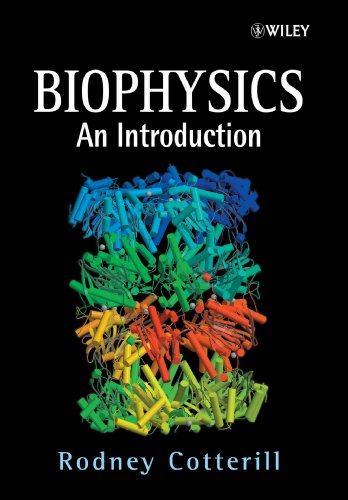

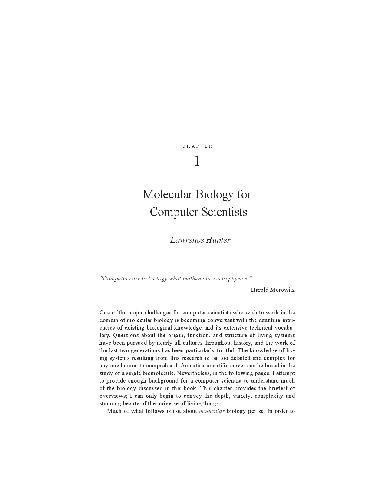
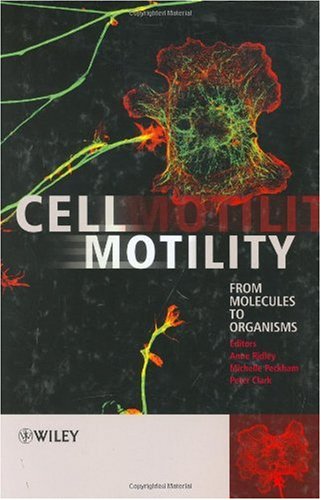
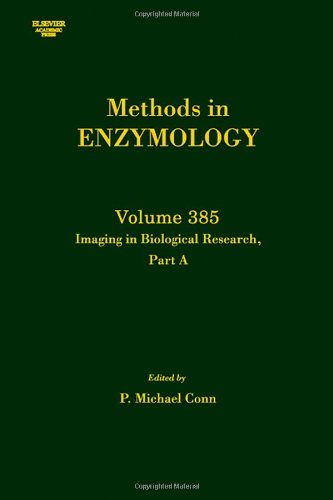
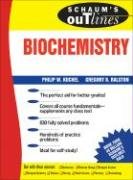
Reviews
There are no reviews yet.